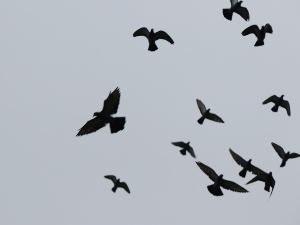
Birds can suffer a variety of different injuries and even though the bird may not show that it suffering and that it is in a lot of pain, the bird very likely is suffering and is in a lot of pain.
This article looks into what you can do if your bird’s nail is ripped off.
Table of Contents
Birds nail ripped off:
Birds just like any other animal, can suffer from injuries, a nail ripping off of a human would be quite painful and we could only assume that this would be painful for a bird as well.
Here is what you need to know about it:
Bird nail ripping off:
A bird’s nail can rip off for a variety of reasons, and this actually happens to a lot of birds quite often.
If the bird’s wound does not stop bleeding and heal on its own then dressing the wound as quickly as you can, and keeping it from bleeding too much, is very important.
Birds are very small and they can lose a lot of blood very quickly. If the wound doesn’t clot up and stop bleeding, if the bird’s wound is left to bleed out, then the bird can bleed to death.
The blood will likely quickly clot up and the wound will stop bleeding on its own but it also may not, if it doesn’t then you may need to get involved. If the bleeding stops then you don’t have to get involved to help the bird.
Just keep an eye on the bird to make sure no complications develop and to make sure that the bird doesn’t go into distress.
What to do:
If the site of the injury is bleeding then you can use styptic powder, flour, or corn starch to clot the area up, this should help to stop the bleeding.
You can place your powder of choice in a bowl or in your hand and simply dip the bird’s toe in it to stop the bleeding. You may have to dip multiple times to get the bleeding to stop.
Don’t pour the powder onto the bird’s wound as the powder can fly all over the place and get on your bird’s face.
If the bird got the wound dirty then clean the area with lukewarm water, avoid using alcohol on the area as this will burn the bird.
You may consider bandaging the bird’s wound up but the bird may simply rip the bandage off, if your bird does this then let the bird go without the bandage.
Place the bird back in its cage and keep an eye on it to gauge its general condition and watch to see if the bird develops some sort of infection.
If the area becomes swollen and weepy (if the wound is producing an excessive amount of fluid as it heals) then the bird may need antibiotics as this is usually a sign of an infection.
Taking the bird to the vet in this case would be the best option. The bird is likely quite stressed as a result of the injury so you’d need to keep stress at a minimum on the way to the vet.
Place the bird in a small carrier or a box to keep it from becoming stressed, make sure that the bird has access to food and water while in the carrier, and make sure that there’s good ventilation in the bird’s carrier.
Placing the carrier on the floor, or on a seat secured with a seatbelt, will keep the carrier from sliding around. You can also cover the open parts of the carrier with a towel if the bird gets overwhelmed by new experiences.
If you can’t get the bird to the vet then isolate the bird and apply a thin coat of an antibiotic salve on the wound until you can get the bird to the vet.
The vet will be able to clean the wound and give the appropriate antibiotics to the bird taking into consideration the bird’s weight. However, if the injury is very serious then the vet may have to amputate.
If you enjoyed this article then you may also be interested in other bird related articles. Here are some articles that you may be interested in: Budgie Squeaking When Flying, Indian Ringneck Beak Problems, Budgie Flapping Wings On Perch, Why Is My Bird Flapping Its Wings At Me, Budgie Talking Silently, Budgie Opens Beak When I Talk To Him, Bird Tilting Head Sideways, Budgie Hissing Sound, Budgie Cooing

